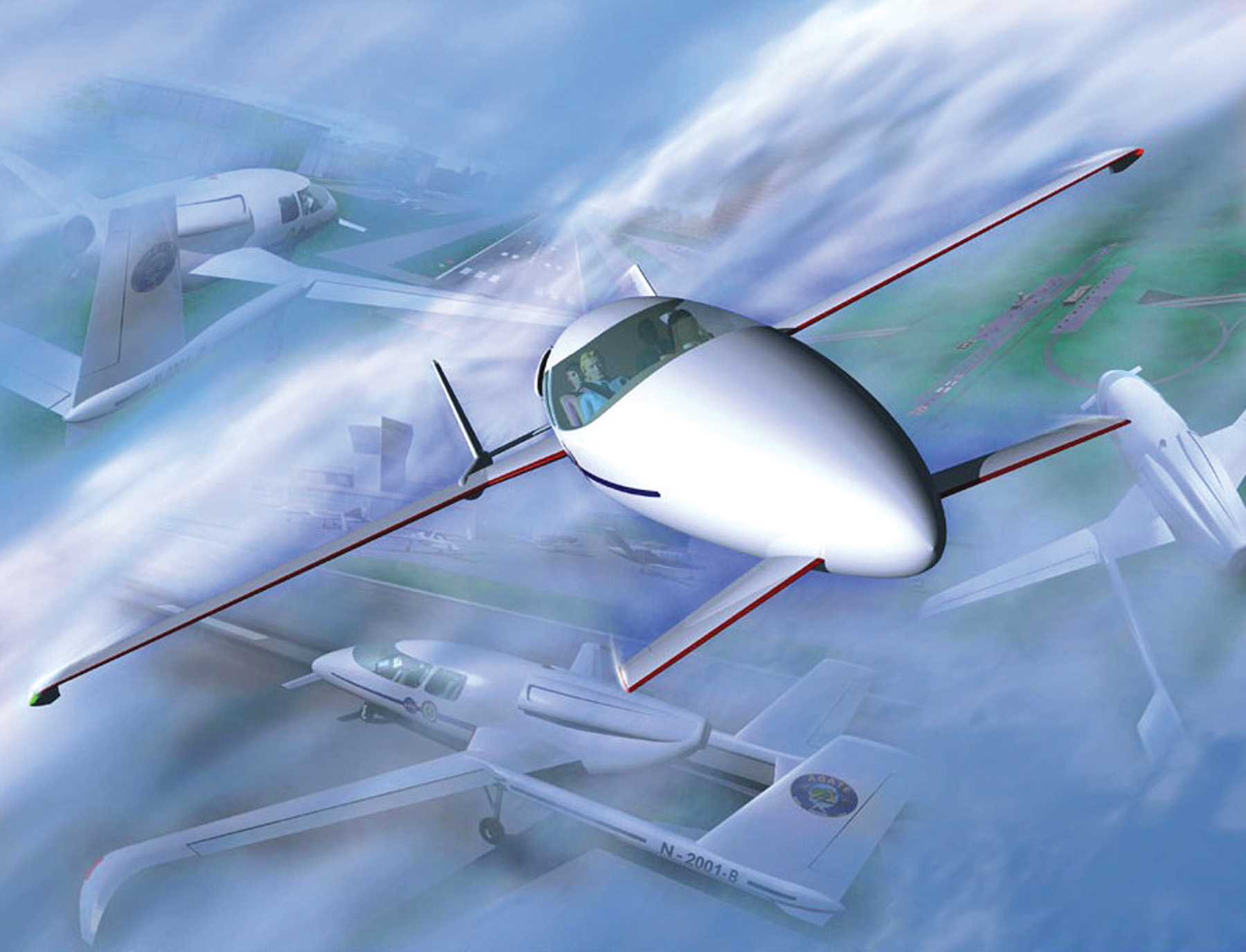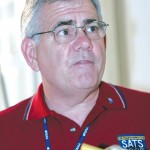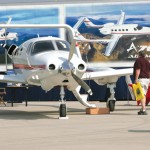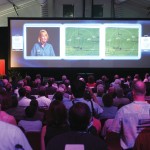Imagine taking a safe, fast, small airplane from a neighborhood airport to visit your family 600 miles away. Imagine almost door-to-door, on-demand service that means you may never see a crowded, major hub airport again. NASA’s Small Aircraft Transportation System project, held on June 5-7 in Danville, Va., offered a glimpse into that kind of personalized air travel.
The Federal Aviation Administration and industry partners joined NASA in showcasing forward-looking aviation technologies at “SATS 2005: A Transformation of Air Travel.” NASA Administrator Michael Griffin and FAA Administrator Marion Blakey were in attendance and helped kick off the demonstration at Danville Regional Airport.
For small planes to fly safely and reliably into more than 3,400 community airports in all kinds of weather, they need crucial new technologies and operating capabilities since many of these small airfields do not have control towers or radar. The demonstration by NASA, FAA and state research groups—known as SATSlabs—used six airplanes equipped with advanced cockpit technologies and displays to demonstrate how small planes can fly safely and efficiently into these local and regional airports.
The three-day event attracted more than 3,000 aviation enthusiasts and was considered a great success in showcasing new aviation technologies.
SATS is a five-year, public-private research partnership between NASA, FAA and the National Consortium for Aviation Mobility. The goal of the public-private partnership is to show that emerging aviation technologies can be integrated into operations in a small airport environment.
SATS research is focusing on four operating capabilities that will help people and goods to travel faster and farther, anywhere and any time. These technologies would allow higher volume operations at airports that don’t have control towers or terminal radar, and pilots to land safely in low visibility conditions at minimally equipped airports. They’d also allow increased single pilot performance, and SATS aircraft to integrate seamlessly into the complex national airspace. SATS technology would allow planes with people and products on board to safely fly into under-used regional, rural and suburban airports. That includes many airfields that don’t have radar or air traffic control towers. Nearly all of the people in the U.S. live within 30 minutes of one of these airports.
For more information, visit [http://sats.nasa.gov], [http://ncam-sats.org] or [http://www.sats2005.com].
- FAA Administrator Marion Blakey and NASA Administrator Michael Griffin talk with reporters at the SATS 2005 demonstration.
- Langley’s Jerry Hefner leads NASA’s SATS project.
- Author Jim Fallows speaks during a luncheon at the SATS 2005 demo.
- A guest checks out an A500 twin-piston aircraft from Adam Aircraft on display during the technology demonstration.
- Small Aircraft Transportation System technology may, one day, allow small aircraft to land at airports near business or tourist destinations.
- Small Aircraft Transportation System technology may, one day, allow small aircraft to land at airports near business or tourist destinations.
- Visitors pack into the main tent area of the SATS 2005 technology demo to catch a glimpse of the future of flight.



















